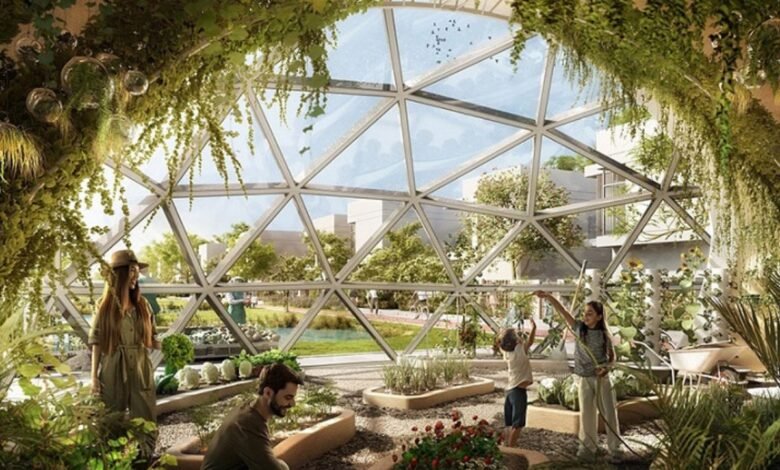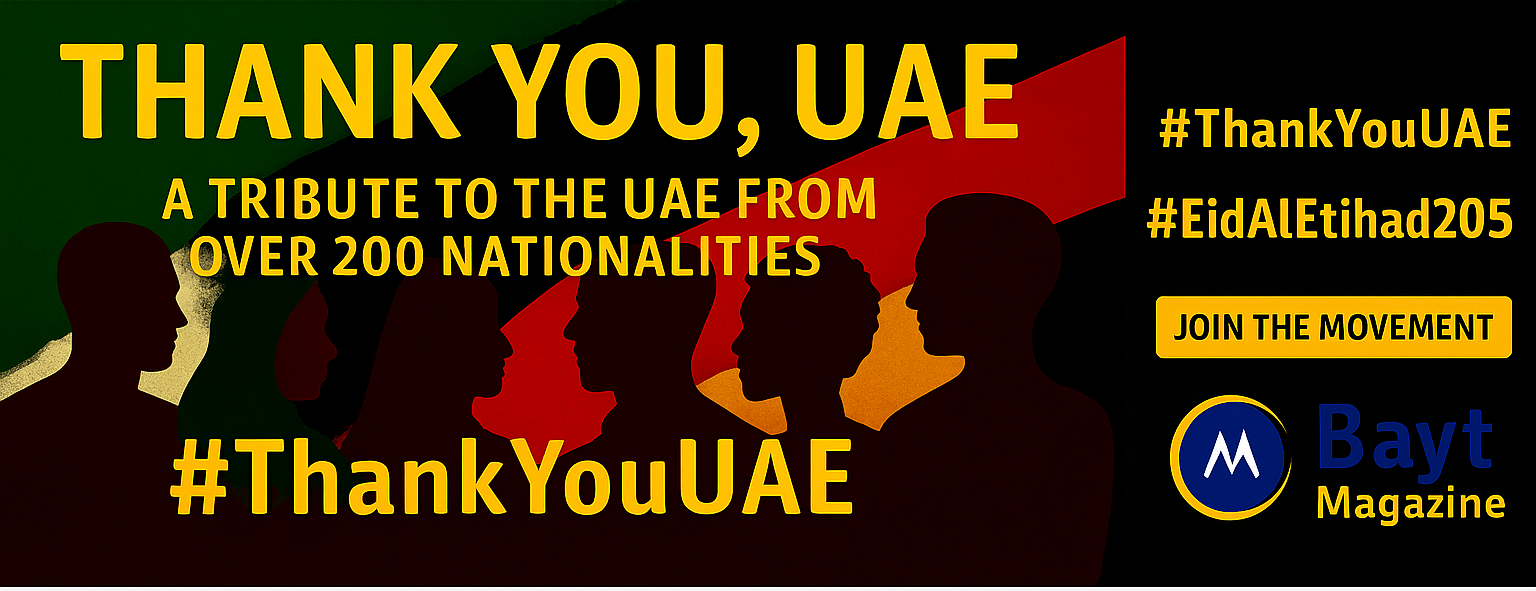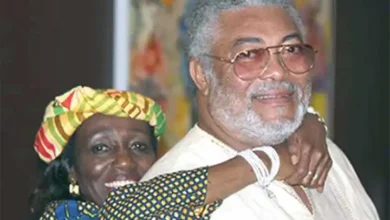
Abu Dhabi’s Pocket Cities: Your Guide to Future Living in 2030
Abu Dhabi’s ‘pocket cities’ show us what life could look like in 2030 and beyond. These cities provide an innovative answer to a significant urban challenge. The city’s original 1970 design accommodated about 600,000 people, but now faces a population boom that will reach 3 million residents by 2030. This growth requires new ways of thinking about urban spaces, especially since Abu Dhabi ranks among the world’s top 70 most expensive cities.
The UAE Vision 2030 and Abu Dhabi Vision 2030, created in 2006, are the foundations for this transformation. The Abu Dhabi Urban Planning Council leads this quarter-century plan that revolutionizes the emirate through environmentally responsible development principles. The UAE has moved beyond its traditional oil-based economy and now positions itself as a center for renewable energy technologies and tourism. The Capital District Master Plan showcases this change as it develops into the United Arab Emirates’ new capital city. Pocket cities prove that sustainable, livable environments can thrive despite rapid population growth.
What Are Pocket Cities and Why They Matter
Pocket cities are changing urban development by creating concentrated areas where people can find everything they need close by. This state-of-the-art approach to city planning has gained momentum as cities worldwide deal with quick urbanization and sustainability challenges.
Compact urban zones with full amenities
Pocket cities (or pocket neighborhoods) are communities that promote close-knit bonds through smart space planning. These areas have smaller homes built around shared spaces, which helps neighbors interact more. The idea goes beyond housing to cover urban zones where daily needs are easy to reach.
The “15-minute city” concept shows this perfectly—it’s a well-planned, walkable, mixed-use space where people can reach their needs within a 15-minute walk. These areas stay lively all day long instead of becoming empty after work hours.
Key features of pocket cities are:
- Dense development with mixed land uses
- Connected public transport systems
- Quick access to local services and jobs
- Less dependence on cars
- Green spaces and infrastructure
These compact zones offer many benefits. People get recreational spaces that help them stay active and social. The effect on the environment is much smaller because of shorter travel distances and fewer cars. Research shows that pocket parks—small green areas in these developments—help improve community health and social life, especially in crowded areas.
How they arrange with Abu Dhabi Vision 2030
The pocket city model fits perfectly with Abu Dhabi’s Vision 2030 framework. The ‘Plan Abu Dhabi 2030 – Urban Structure Framework Plan’ guides new development and tackles major urban issues like environment, land use, transport, open space, and the capital city’s image.
This arrangement shows through shared goals:
Pocket cities use less resources through smart land use and transport systems. This helps Abu Dhabi move from oil dependency toward renewable energy.
The focus on better living appeals to Abu Dhabi’s want to build livable communities. Pocket cities have well-designed buildings and shared spaces that suit local needs, which helps people live healthier with easy access to outdoors, light, and activity.
Both want economic strength. Compact cities help businesses grow through smart density that supports local shops and creates busy commercial areas.
Differences from traditional city planning
Old-style urban planning often creates sprawling cities where activities are split up—homes stay far from shops, which means long commutes. Pocket cities use density, variety, and mixed land use as main strategies.
Regular development usually makes car-dependent areas with big infrastructure networks. Pocket cities put pedestrians, cyclists, and public transport first with smaller, quicker infrastructure systems. This helps the environment, costs less, and brings people together.
Traditional planning doesn’t spread green spaces well through cities. Pocket cities put small green areas throughout, making nature part of daily life instead of having big parks that need special trips.
The best part about pocket cities is how they help people meet and talk—something that old-style development missed while focusing on just making things work.
Core Design Principles Behind Abu Dhabi’s Pocket Cities
Image Source: YUMPU
Abu Dhabi’s urban development blueprint rests on four connected design principles that define how pocket cities work. These principles create the foundation to build vibrant, environmentally responsible urban spaces that meet residents’ needs and reflect local values.
Mixed-use zoning and walkability
Mixed-use zoning is the life-blood of pocket city design. It brings together residential, commercial, and recreational spaces in compact areas. This design lets residents reach their daily needs within a 5-15 minute walk, which removes the need for car trips to handle routine tasks.
Abu Dhabi’s mixed-use developments create human-scaled environments with shops at street level and homes above. This vertical layout makes the best use of land while creating lively streets. Many of these developments take inspiration from the traditional Arabic souq (market), which encourages natural community gathering spots.
The streets come alive through thoughtful design with wide sidewalks, shade structures, and rest areas that work well in the local climate. Unlike typical developments that put cars first, Abu Dhabi’s pocket cities make pedestrians their priority. They feature short blocks with multiple paths and interesting sights along the way.
Green infrastructure and open spaces
Pocket cities in Abu Dhabi use advanced green infrastructure systems that work on many levels at once. These systems do more than look good – they handle stormwater, reduce urban heat, and create paths for wildlife throughout developed areas.
Open spaces follow a clear order – from small pocket parks serving nearby homes to larger district parks that link multiple communities. This gives residents nature access at different scales as they move through their day.
Native and adapted plants help create resilient ecosystems while using less water. Many developments also include urban farming, from rooftop gardens to community plots, which helps with food security and brings people together.
Cultural identity and architectural harmony
Abu Dhabi’s pocket cities stand out through their steadfast dedication to showing local cultural identity in modern urban forms. The architecture draws from traditional Emirati building methods – the barjeel (wind towers), mashrabiya screens, and inner courtyards – reimagined with modern materials.
Buildings create harmonious streetscapes at a human scale while providing needed density. Unlike the scattered skyscrapers in many world cities, Abu Dhabi’s developments emphasize how buildings relate to each other, creating unified environments rather than just a collection of structures.
Public art and cultural programs are vital parts of these developments, with spaces designed for community events, shows, and exhibitions. These elements help pocket cities support both practical needs and cultural expression.
Smart mobility and public transport integration
Transportation in Abu Dhabi’s pocket cities connects people through many options beyond private cars. Electric shuttles, bike sharing, and micro-mobility choices help people reach larger transport networks from their neighborhoods.
Public transport leads the mobility planning, with denser development around transport hubs. Underground and multi-story parking helps free up ground space for people to use.
Digital systems enable live transportation management, from traffic signals to on-demand transit. Newer development plans include spaces for self-driving vehicles, with special lanes and pickup zones ready for future transportation.
These four design principles work together to create urban spaces that balance efficiency with livability, technology with tradition, and density with quality of life. Abu Dhabi’s pocket cities show how sustainable urban development lines up with Vision 2030 goals.
Sustainability at the Heart of Pocket Cities

Image Source: Time Out Abu Dhabi
Abu Dhabi’s urban transformation rests on a detailed sustainability framework that shapes pocket city development. This approach goes nowhere near just environmental considerations. It welcomes social and economic dimensions equally to build resilient urban spaces that line up with UAE Vision 2030.
Environmental sustainability goals
Masdar City shows Abu Dhabi’s steadfast dedication to environmental sustainability. Buildings here use up to 40% less energy and water than the UAE average. Smart grids, autonomous transportation, and net-zero emission buildings have made this possible.
Abu Dhabi’s sustainable city projects use these key environmental strategies:
- High energy efficiency designs that cut electricity costs by up to 50%
- Waste separation at source with over 85% landfill diversion
- Low-flow water fixtures that reduce consumption by 40%
- Solar panels on homes and parking structures
These projects support Abu Dhabi’s Green Agenda 2030, which wants to reduce carbon emissions by 30% and save AED 10 billion by 2030.
Social inclusion and community well-being
Social inclusion serves as both outcome and process in Abu Dhabi’s pocket cities. The focus lies on removing barriers so everyone can access urban services equally. This strategy recognizes that inclusive urban development must meet specific needs of women, persons with disabilities, children, youth, and low-income communities.
Universal design principles merge throughout these developments. Public spaces encourage physical activity and social connections among residents. These developments prioritize safety features like improved lighting near transit stations and schools to address women’s specific safety concerns.
Economic resilience and local job creation
Pocket cities substantially boost economic diversification. Non-oil sectors should contribute over 60% of GDP by 2030. Local economies grow stronger through entrepreneurial ecosystems that support micro, small, and medium enterprises.
Studies show urban resilience investments pay off well—each invested dollar can generate tenfold returns through avoided losses, job creation, and stronger local economies. Abu Dhabi’s strategy has entrepreneurial guidance for low-income businesses to encourage inclusive economic growth throughout communities.
Role of Estidama and the Pearl Rating System
Estidama (meaning “sustainability” in Arabic) serves as the regulatory backbone of Abu Dhabi’s sustainable development approach. The Pearl Rating System assesses projects across seven categories: integrated development process, natural systems, liveable spaces, precious water, resourceful energy, stewarding materials, and innovating practice.
Different requirements apply to communities, buildings, and villas. Since 2010, all new development projects in Abu Dhabi must achieve at least one pearl, while government buildings need two pearls. This mandatory framework ensures projects address sustainability throughout their lifecycle—from design and construction through operation.
Key Projects Shaping the Future: Masdar City and Beyond
Image Source: Born to Engineer
Abu Dhabi’s pocket city vision has several projects that show how green city planning works in real life.
Masdar City as a prototype
Masdar City represents a breakthrough in sustainable urban communities. This 640-hectare development wants to achieve complete carbon neutrality and zero waste. The buildings here use 40% less energy and water than similar buildings elsewhere. The city blends cutting-edge technologies with traditional Arab settlement principles. The result is a desert community that runs without fossil-fueled vehicles at street level.
The city serves as a testing ground where businesses, researchers, and entrepreneurs work together to tackle climate and resource challenges. The expansion by 2025 has landmark projects like Masdar City Square, The Link, Connect Park, and the Net Zero Energy Mosque.
Capital District and its smart infrastructure
Abu Dhabi changes its digital world through major investments in resilient infrastructure. This positions the emirate as a leader in building future-ready cities. The Capital District shows this commitment. It grows to become UAE’s new capital city with smart systems that connect transportation, energy, water management, and telecommunications.
Yas Island and Saadiyat Island developments
The Sustainable City on Yas Island earned the highest Estidama 5 Pearl rating under the Pearl Villa Rating System. Solar panels on homes and parking structures will power the residences. This helps residents save up to 50% on their energy bills.
Saadiyat Island develops as a distinctive urban quarter for 160,000 residents and 220,000 workers. Famous architects designed its cultural district venues. These include Frank Gehry (Guggenheim), Jean Nouvel (Louver), and Zaha Hadid.
Lessons from Dubai Vision 2030
Dubai’s experience gives valuable lessons for Abu Dhabi’s development. Both emirates focus on sustainable urban planning as the foundation for smart city growth. This approach balances environmental, economic, and social factors. They welcome technological innovation to create thriving urban spaces in desert regions.
Challenges and Opportunities Ahead
Abu Dhabi’s pocket city vision shows promise but faces several complex challenges. The city needs to find balance between its ambitious development goals and practical realities.
Balancing growth with environmental limits
Cities cannot expand without affecting biodiversity unless they have strategic plans in place. Most urban development happens near protected areas or within biodiversity hotspots. This creates tension between development needs and conservation efforts. Abu Dhabi’s biggest problem is its lack of water. The city’s groundwater withdrawal has reached 2,100 million cubic meters each year—about 20 times more than what nature can replenish.
Funding and investor confidence
Money plays a vital part in developing pocket cities. Investors need clear communication about challenges and realistic growth plans to stay confident. These spaces often lose their benefits due to high maintenance costs from vandalism and heavy usage when funding falls short. Tax benefits for businesses that support green space projects could be a way to attract private investment.
Adapting to climate and cultural needs
The design of pocket cities must work well with Abu Dhabi’s extreme weather. Some projects choose budget-friendly materials over cultural elements. This makes it harder for these spaces to reflect the local character authentically. Local communities should have a voice in design and management to feel more connected to these spaces.
Global comparisons and best practices
Community-led pocket parks around the world have proven their worth. Lancaster turned an investment of AED 42.23 million into AED 477.35 million in private funding. Policies that remove strict zoning rules and put pedestrians first help create lively, social spaces.
Abu Dhabi’s pocket cities show a bold new vision of urban living for the 21st century. These innovative developments strike the right balance between density and livability. They create vibrant communities where people can walk to get everything they need. The emirate’s population will grow from 600,000 to 3 million residents by 2030, making this urban development essential.
Estidama and the Pearl Rating System create a reliable framework for green development in these communities. Masdar City shows how these ideas work on the ground – its buildings use 40% less energy and water than UAE averages. Yas Island’s sustainable city development proves that pocket cities can protect the environment and boost quality of life.
Mixed-use zoning, green infrastructure, cultural identity, and smart mobility are design principles that work together. They create spaces that respect local traditions while embracing new technologies. Abu Dhabi hasn’t just copied Western urban models. Instead, it has adapted pocket city concepts to match its climate, culture, and growth needs.
Some challenges still exist. The lack of water is perhaps the biggest environmental hurdle. Current groundwater use is nowhere near natural replenishment rates. On top of that, keeping investors confident means being open about possible problems while pursuing ambitious goals.
In spite of that, growing cities worldwide can learn from Abu Dhabi’s approach. The emirate shows how smart urban planning supports economic growth, environmental protection, and social inclusion at once. Climate change and urbanization are happening faster globally. Abu Dhabi’s pocket cities could become models for building strong communities that fit local conditions while meeting basic human needs.
These developments are still growing but reshape the scene of how cities work in tough environments. Abu Dhabi’s pocket cities show a future where urban spaces boost natural resources instead of depleting them. They strengthen communities rather than divide them and celebrate cultural heritage instead of erasing it.





